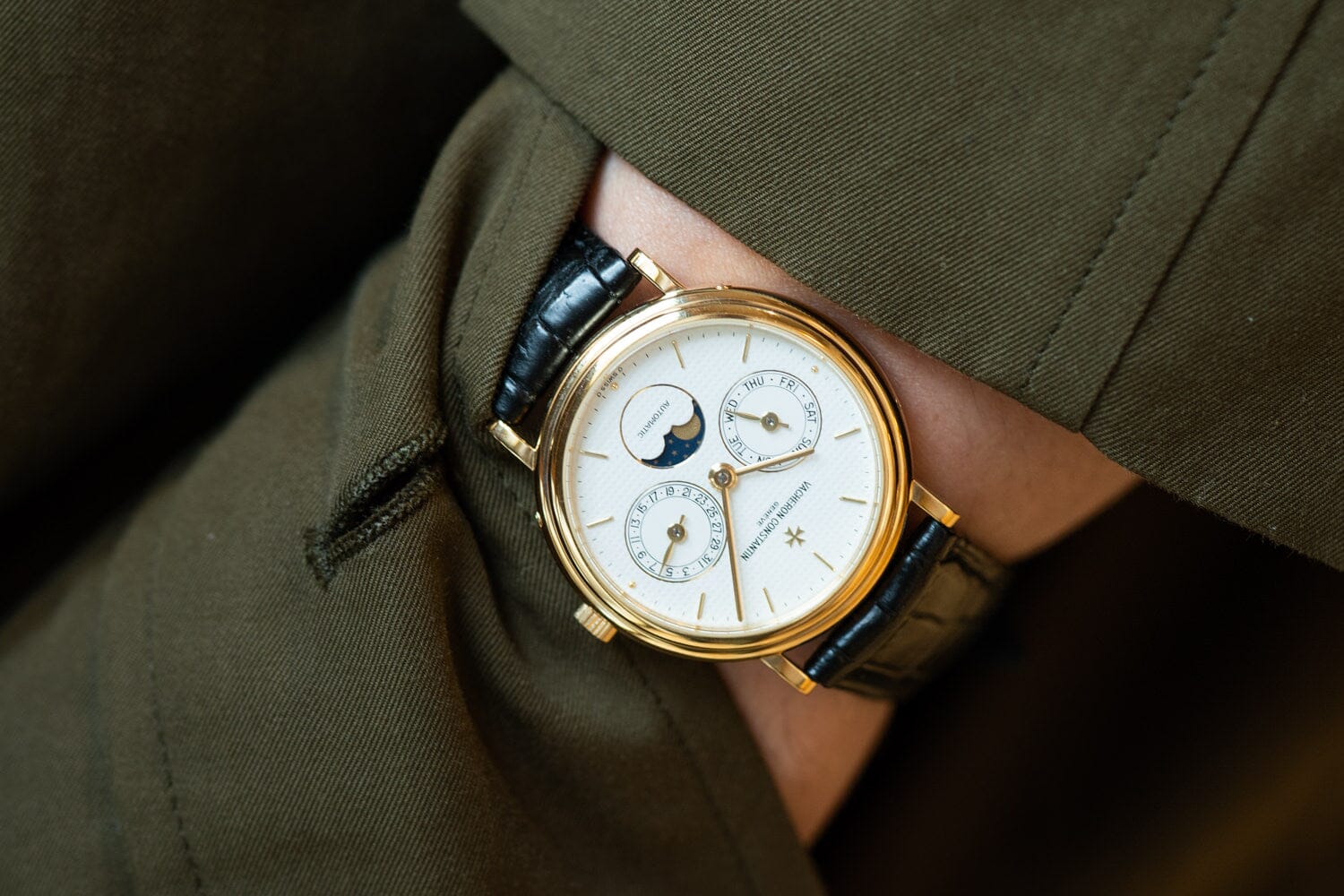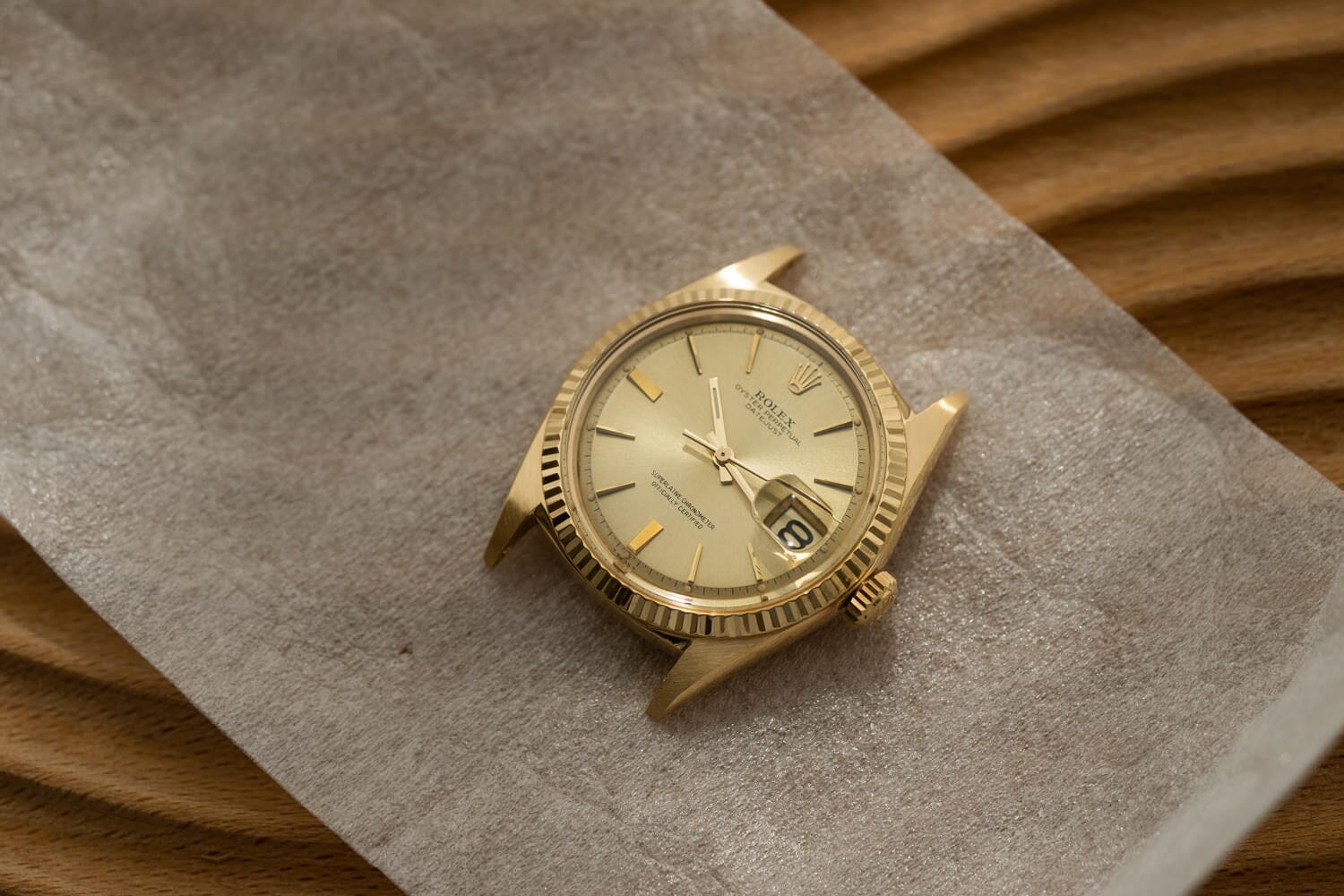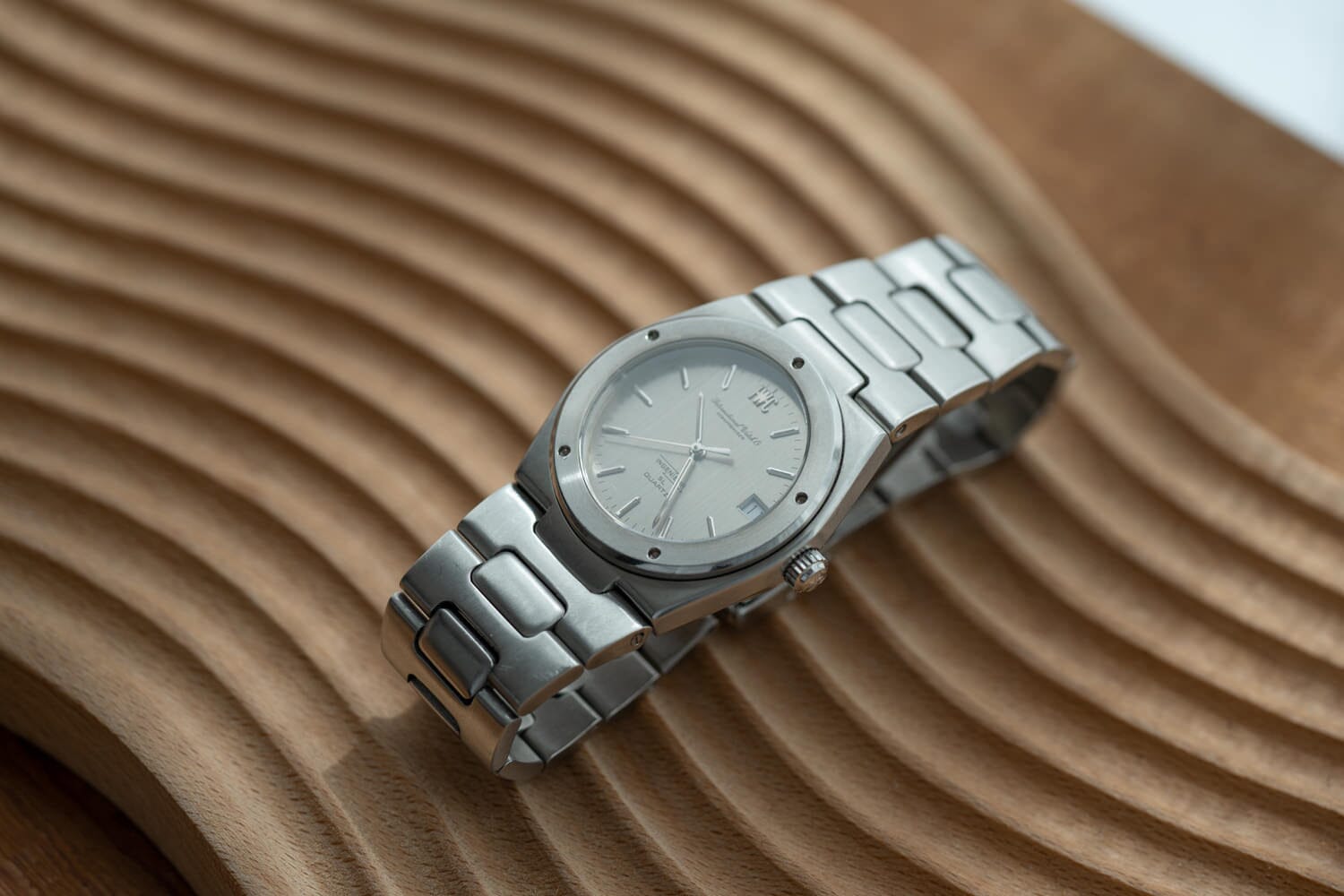
IWC Ingenieur SL "Jumbo" Quartz Ref.3003
Summary
Introducing the IWC Ingenieur SL Jumbo Quartz Ref.3003.
Ingenieur means engineer in German. As the name suggests, this watch is made for engineers.
The first Ingenieur Ref.666 was born in 1955.  analog/shift
analog/shift
The background to this development was the rapid increase in the number of people working in high magnetic fields as the field of mechanical engineering developed in the 1950s.
Engineers working at CERN, hydroelectric power plants, and even nuclear power plants work in close proximity to ever-strong magnetic fields, so they needed watches that could withstand that environment.
In addition to high magnetic resistance, shock resistance and water resistance were the most important features of this tough watch.
After the refined design of the second generation Ref.866 in 1967, a major design change took place in 1976.
That is the model Ingenieur SL "Jumbo".

a collected man
Watch designer Gerald Genta has reborn it into a sporty design with an integrated bracelet.
Coincidentally, the Genta-designed Nautilus Ref.3700 also appeared in 1976, so it can be said that two historically important watches were born.
By then, Genta had designed "golf club" and "polo club" at IWC, which together formed the SL line.

1976/77 SL line catalog
SL stands for "Steel Line" and was intended for collection as a luxury watch made of steel like Royal Oak.
It didn't turn out to be as successful as it was supposed to be, and the SL line added watches other than steel.
Therefore, with the passage of time, SL often means "Sport Line".
Ingenieur SL "Jumbo" has automatic winding Ref.1832 and quartz model Ref.3003 introduced this time.
There were also three variations of each: steel, steel and 14K gold combination, and 18K solid gold.


Let's take a closer look at each part of the watch.
Finally, I will explain why this watch is rare and how rare it is.
case

The case is made of stainless steel.
It features a rather sculpted shape towards the lugs, which is close to Omega's C-line case, designed by Genta himself.
Since the movement was not thin, the thickness is 12.5mm, which is quite thick for a watch of this era, but the design does not make you feel it.
Another similarity to the Genta-designed Royal Oak is that the bezel has five screw holes.
The front of the case has a vertical hairline finish, and the bezel has a concentric hairline finish.


The sides have the same hairline finish as the front, giving a sense of unity.
Opinions differ as to whether the Ingenieur is strictly classified as a "luxury sports" because of its origins, but the attention to detail, such as the polished finish on the steps of the bezel, definitely follows that trend.
The crown is a "fish crown" that indicates waterproof specifications. It is a screw down crown.

The outer circumference of the caseback is polished, and the inner circumference has a concentric hairline finish.

Weighing about 155g, this model has a solid feel as a vintage watch.
The current Rolex sports model weighs about the same, so if you are used to it, you should be able to wear it comfortably.
Size
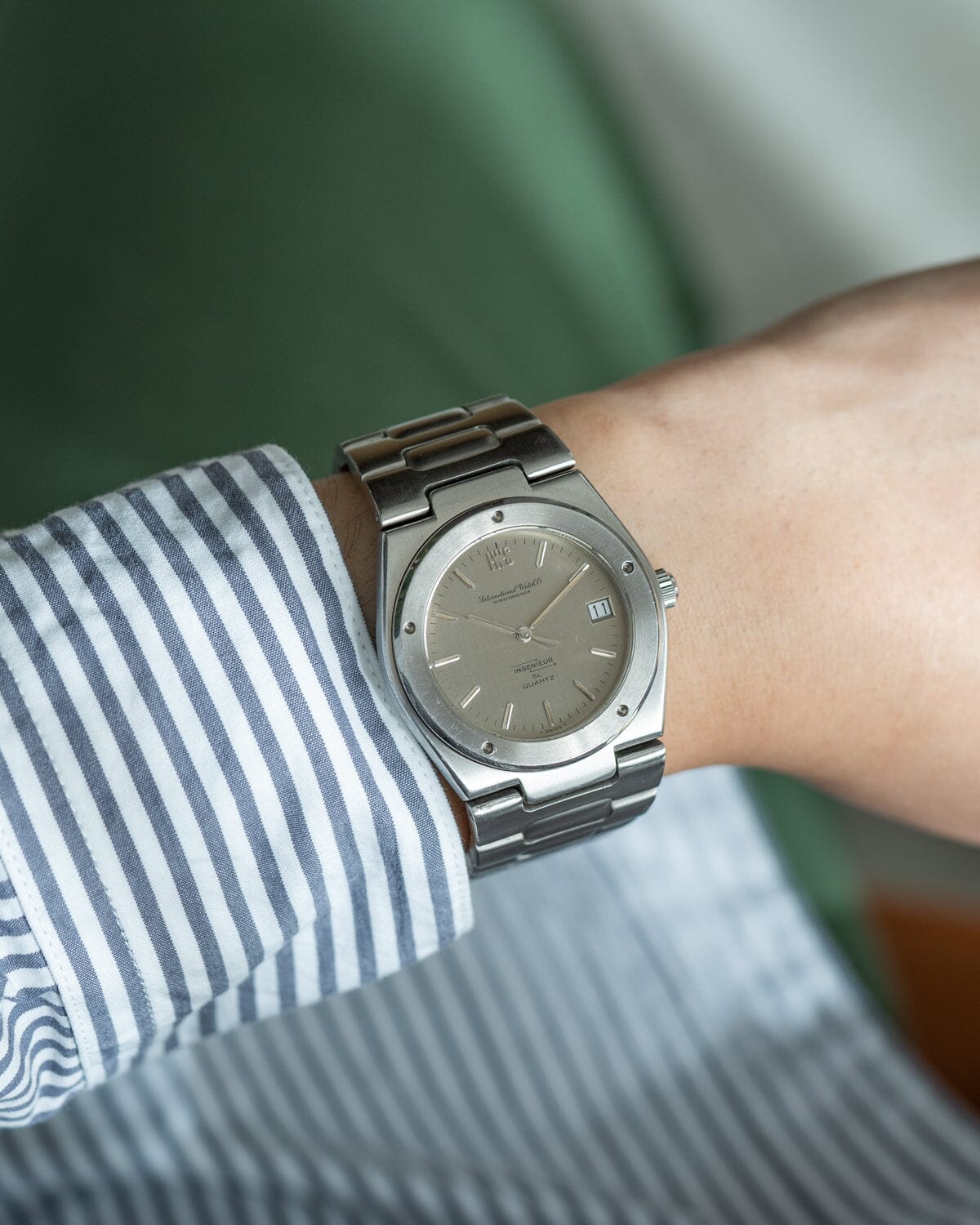
* Model wrist length approx.16.5cm
The case size is 40mm, which is very large for a 1970s watch.
It is because of this size that this watch is called "Jumbo".
The first Royal Oak and Nautilus models are called "jumbo" in the same way.
However, as mentioned above, the shape is sharp toward the lugs, so it may look slightly smaller than the numerical value. The bezel diameter is 37mm.

When viewed from the side, it feels quite voluminous.
Compared to Royal Oak, the width of the bracelet is fairly wide, so it will look quite large for those with an wrist of 16cm or less.
bracelet

It comes with a case and an integrated stainless steel bracelet.
Each link is larger than a Rolex hard bracelet.
The buckle (clasp) has a double lock, which shows that practicality was emphasized.
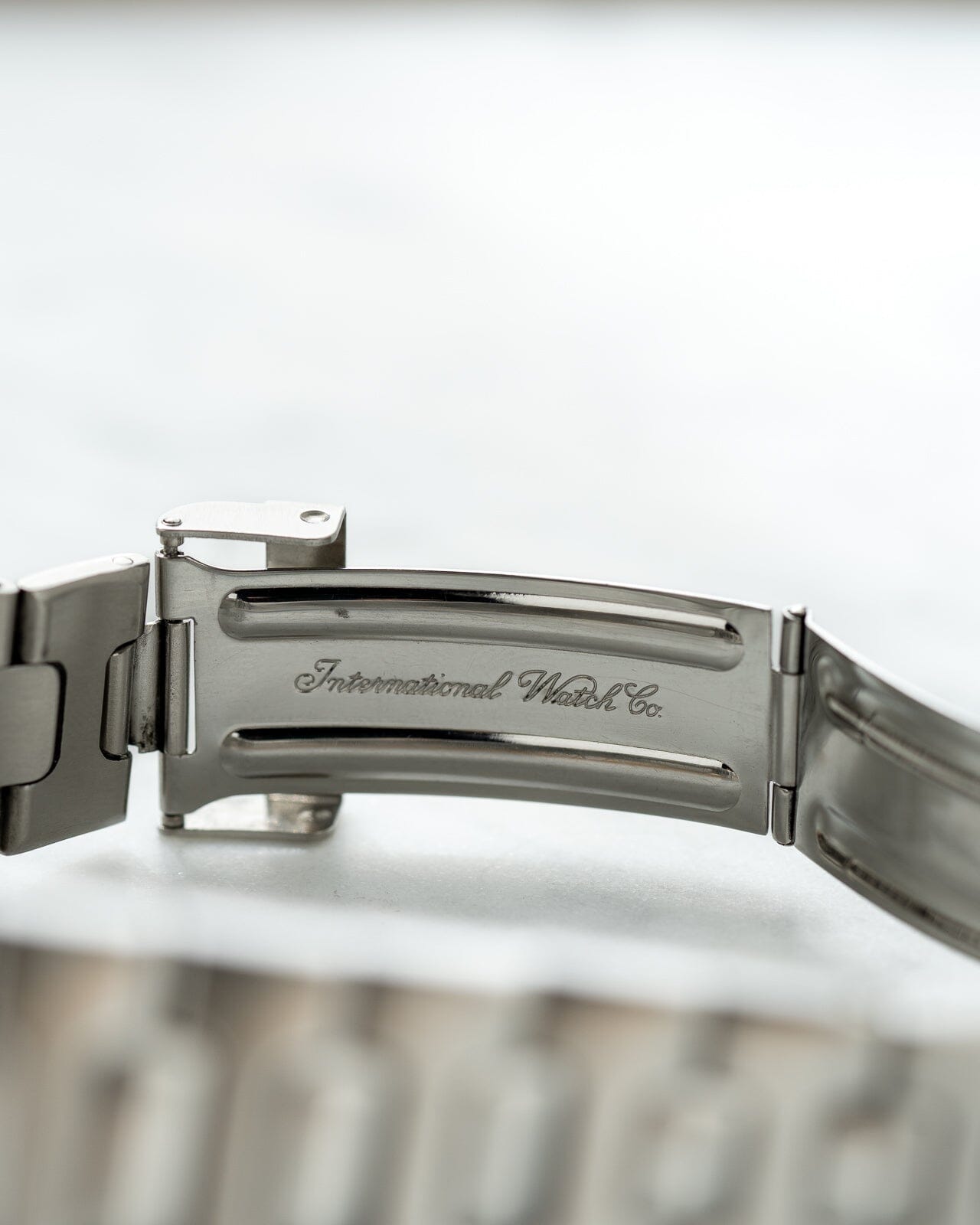
The middle plate of the clasp also contains the IWC engraving.
It can be adjusted up to about 20.5 cm length.
Dial
There are several types of dials for the Ingenieur SL Jumbo.
Checkered black, called "waffle" in the community. 
a collected man
Champagne dial for combination and gold models. 
worldoftime.de
And it is a silver dial of the hairline finish of the introduction this time. 
It's rhodium-plated, and when viewed from different angles, it turns a dark gray hue. 
Let's take a closer look. The 12 o'clock position is the IWC applied logo and cursive print. 
 The notation at 6 o'clock is written as "INGENIEUR SL QUARTZ" because it is a quartz model.
The notation at 6 o'clock is written as "INGENIEUR SL QUARTZ" because it is a quartz model.
The self-winding model has only "INGENIEUR SL" written on it, so that part is different.
The indexes are thin bullet-shaped, and the hands are pencil-handed and coated with luminous paint.
All of them are in condition that they have darkened with aging due to tritium luminous.
Movement
 The movement is quartz Cal.2405.
The movement is quartz Cal.2405.Based on the ETA 940.111, this movement has been refined by IWC .
In the successor model Ref.3303, the movement has been changed to Cal.2250 and has been made thinner.
Rarity
The rarity of the Ingenieur SL "Jumbo" could be the main topic of this model's introduction.
According to the German magazine Klassik Uhren, 978 Ingenieur SL Jumbo were produced.
Of these, 543 are the automatic Ref.1832, 335 are the quartz Ref.3003, and 45 and 55 are the 18K gold versions of both models.
Both Ref.1832 and 3003 are available in steel only and steel and 14K gold combination, and the above production numbers are their combined numbers.  However, there is a description that it was possible to exchange the movement from an automatic model to a quartz model and from a quartz model to an automatic one at the customer's request.
However, there is a description that it was possible to exchange the movement from an automatic model to a quartz model and from a quartz model to an automatic one at the customer's request.
The selling price of the Ingenieur SL Jumbo was 2,100 Swiss francs, or 2,370 US dollars, which was a high price of over 400,000 yen at the rate at the time.

That's about the same price as IWC 18K gold dress watch.
It is clear that the price was considerably higher than the Royal Oak's 3,650 Swiss francs.
Applied to the present day, the price is set at 2 million yen, compared to the Royal Oak's approximately 3.5 million yen.
There was also a description that the self-winding model did not sell well, so it was recalled once and the quartz model was sold using the case as it was.
This was probably due to the fact that the time was right in the middle of the quartz crisis, and the value of mechanical watches was significantly lower.
Therefore, it is not possible to clearly determine how many of the watches were self-winding and how many were quartz.
The catalog reference of the quartz model is Ref.3003, but when you actually look at the watch like this one, the engraving on the inside of the caseback is 1832 for the above reasons.


We can say with certainty that fewer than 878 Ingenieur SL Jumbo steel watches were sold at most, and only about half that number at least.
The number of watches currently sold is higher for the automatic Ref.1832, and very few are seen for the quartz Ref.3003.
Prices for steel Ref. 1832s start at around 3.5 million yen, and 6 million yen with the box and paper, but quartz has not reached that level.
Conclusion
The Ingenieur SL Jumbo is a very important piece in the Ingenieur collection and one of the most highly regarded watches ever made by Gérald Genta.
In the past few years, the Ingenieur has been the focus of attention as Genta's work has been reappraised and vintage Nautilus and Royal Oak watches have skyrocketed in price.
However, IWC has a different approach to watchmaking compared to Patek or Audemars Piguet, so I don't think they are exactly the same thing.
Of course, although it has value as a collection piece, it is a vintage piece that is suitable for everyday use because it is made of quartz with a sturdy construction.
The condition is also very good, and the most important point is that it is rarely seen.
How about the Ref.3003 with quartz instead of self-winding?
You can see the product page from the following.
IWC Ingenieur SL "Jumbo" 3003 Quartz
The source
Fratello Watches
http://www.moeb.ch/Ingenieur/Ingenieur_e.html
THE IWC INGENIEUR
web Chronos
